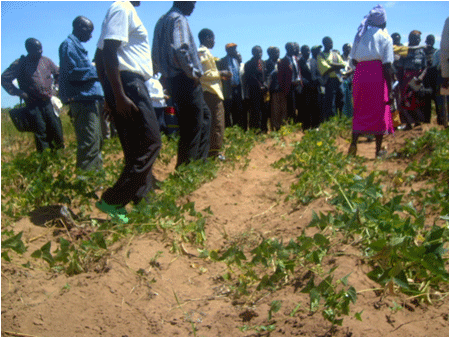Malawi National Plant Genetic Resources Centre
Background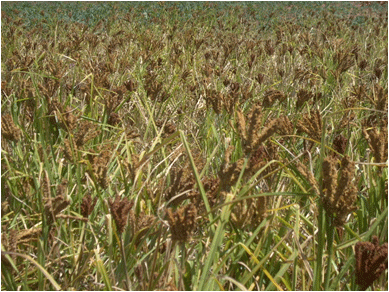
Malawi is endowed with a rich biodiversity having between 5000 – 6000 plant species (Golding 2002). However, due to pressure resulting from overpopulation, deforestation, over exploitation, land degradation, urbanisation and introduction of hybrid varieties, biodiversity is liable to get eroded.
In order to conserve and encourage sustainable utilisation of the existing diversity, The National Plant Genetic Resources Centre (NPGRC) was established in Malawi in the Ministry of Agriculture in 1992. The Malawi Plant Genetic Resources Centre (MPGRC) is based at Chitedze Agricultural Research Station, making it the country’s depository centre of plant germplasm. Through the twelve years of its establishment, it has accumulated 2510 samples from 50 plant species. The samples include 2069 seed samples and 441 vegetative materials.
Objectives
The main objectives of the Centre are:
- to promote the exploration, collection, conservation, characterisation, documentation and utilisation of Malawi Plant Genetic Resources;
- to identify, plan and formulate Malawi’s plant genetic resources conservation priorities and strategies;
- to hold collections of indigenous or adapted exotic plant genetic resources and develop the most appropriate measures and facilities for conserving them;
- to handle the in situ, conservation of crop, forestry, pasture, medicinal and other indigenous or exotic plants, in collaboration with other organisations in the country;
- to foster cooperation and encourage the development of biotechnology in the conservation and utilisation of plant genetic resources in Malawi;
- to directly serve plant breeding and plant research needs of the country by holding a broad-based plant genetic resources of both indigenous and exotic species;
- to evaluate, review problems and recommend to government preventive measures of genetic erosion of plant genetic resources;
- to collaborate with SADC Regional Plant Genetic Resources Centre and other relevant international organisations in the formulation and execution of plant genetic resources activities that are relevant to Malawi needs.
Activities
Core functions of Malawi Plant Genetic Resources Centre include:
- Inventory and collection of threatened plant genetic resources;
- Long-term storage of germplasm in form of seeds and live plants;
- Characterising and evaluating conserved germplasm;
- Conduct public awareness on importance of conserving plant genetic resources; and
- Formulation and implementation of policies affecting plant genetic resources for food and agriculture.
Material
Germplasm collection
The NPGRC has been carrying out several germplasm collection missions since 1993. Crops as well as their wild relatives have been collected. This is evidenced by the number of samples the gene bank is currently holding.
PGR Distribution and Use of Material
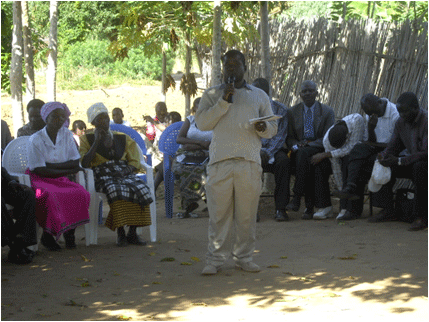
Records of germplasm distributed by the NPGRC since inception show that a total of about 1,309 accessions of different crop

species have been distributed for use in research to local research institutions and 58 sorghum and 54 cowpea samples were sent to Laurentian University in Canada for Molecular marker analysis under the Agrobiodiversity Project.
The NPGRC has been able to know about results of some of the research including work leading to release of varieties mainly due to close association with breeders and other researchers that are carrying out research on these materials. Maize and sorghum were the most frequently requested crops in terms of germplasm distribution.
The NPGRC disseminates information on the germplasm held through inclusion of such information in its annual reports. The NPGRC initiated evaluation work on bambara groundnut germplasm and is now at the stage of on-farm trials in collaboration with the groundnut breeder.
The NPGRC has collaborated with the sorghum breeder in a participatory breeding activity, which was part of the IDRC biodiversity project. The materials evaluated under the activity included mainly gene bank material and current farmers varieties. The end result of this activity has been the release of 5 varieties all derived from gene bank accessions.
A number of farmers have requested for seed samples of the genebank material upon seeing some of these materials growing at the research station during field days.
ActionAid and a farmer group working on organic farming are among NGOs that have received germplam from the NPGRC.
Seed Storage
There are currently a good number of registered and stored germplasm accessions that are not reflected in the active collection database. During the year 2003, 157 samples from 9 different species were dried, packaged and stored.
Sorting out and proper storage and documentation of the accessions for the active collection is on-going. The freezer carton boxes delivered from SPGRC are expected to facilitate the exercise. There are 3 empty deep freezers out of a total of 15 with one being out of order.
Multiplication and Characterisation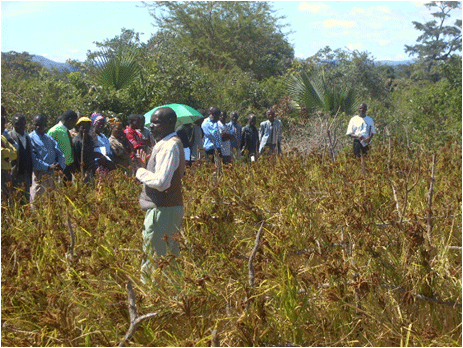
The NPGRC has characterised about 50% of the PGR held and these include mainly maize, sorghum cowpea, fingermillet and bambara groundnut.
All characterisation work has been carried out by the NPGRC as it has not been easy to engage breeders and other researchers in such activities.
All the germplasm accessions that had been planted for multiplication, regeneration and characterisation during the 2003/04 rainy season had been harvested.
An off-season multiplication cycle was carried out at the Lifuwu Research Station on the Shores of Lake Malawi in Salima district. The planted crops included maize (16), sorghum (93) and pumpkins (107).
Field Genebanks
The NPGRC is maintaining field genebanks in three major Research Stations, Hashinthula (sugarcane), Bvumbwe (banana) and Chitedze (5 species).
Although the field collections at Chitedze were still in a fairly good condition, most cassava clones were infected by viruses. For this reason the NPGRC has undertaken to regenerate all clones by planting cuttings in pots in the green house. The plants raised will be used as source of explants for use in the virus-cleaning programme through tissue culture. This is planned to be done using one of the pathology laboratories, which has the necessary facilities.
Organisation
National Plant Genetic Resource Committee (NPGRCom)
|
Dr A. P. Mtukuso
|
Chairperson
|
|
Mr B. E. Bweya
|
Member
|
|
Mr C. S. M. Chanik
|
Member
|
|
Mr P. N. Ching’oma
|
Member
|
|
Dr E. Fabiano
|
Member
|
|
Mr D. A. Kamundi
|
Member
|
|
Dr M. B. Kwapata
|
Member
|
|
Mr C. R. Masamba
|
Member
|
|
Dr C. J. Matabwa
|
Member
|
|
Mr G. P. Sakanda
|
Member
|
|
Mr L. M. Pungulani
|
Secretary
|
Staff
|
Mr Lawrent L. M. Pungulani
|
Curator
|
|
Mr K. Kapila
|
Senior Technical Officer (Collection)
|
|
Mr R. Chitezi
|
Senior Technical Assistant (In Situ/Field Genebank)
|
|
Mr F. Kambadya
|
Senior Technical Assistant (Characterisation/Evaluation)
|
|
Ms Modesta T. Kachapila
|
Technical Assistant Documentation & Information
|
|
Mrs C. Kamwendo-Banda
|
Technical Assistant In Situ/Collecting
|
Contacts
Chitedze Research Station
P. O. Box 158
Lilongwe, Malawi
Tel: +265-1-707222
Fax: +265-1-707041
EMail: This email address is being protected from spambots. You need JavaScript enabled to view it. (Curator - Dr Lawrent Pungulani)
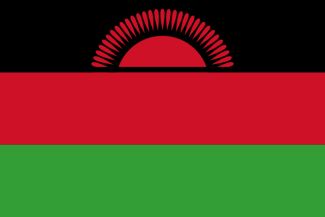


 Records of germplasm distributed by the NPGRC since inception show that a total of about 1,309 accessions of different crop
Records of germplasm distributed by the NPGRC since inception show that a total of about 1,309 accessions of different crop species have been distributed for use in research to local research institutions and 58 sorghum and 54 cowpea samples were sent to Laurentian University in Canada for Molecular marker analysis under the Agrobiodiversity Project.
species have been distributed for use in research to local research institutions and 58 sorghum and 54 cowpea samples were sent to Laurentian University in Canada for Molecular marker analysis under the Agrobiodiversity Project.
